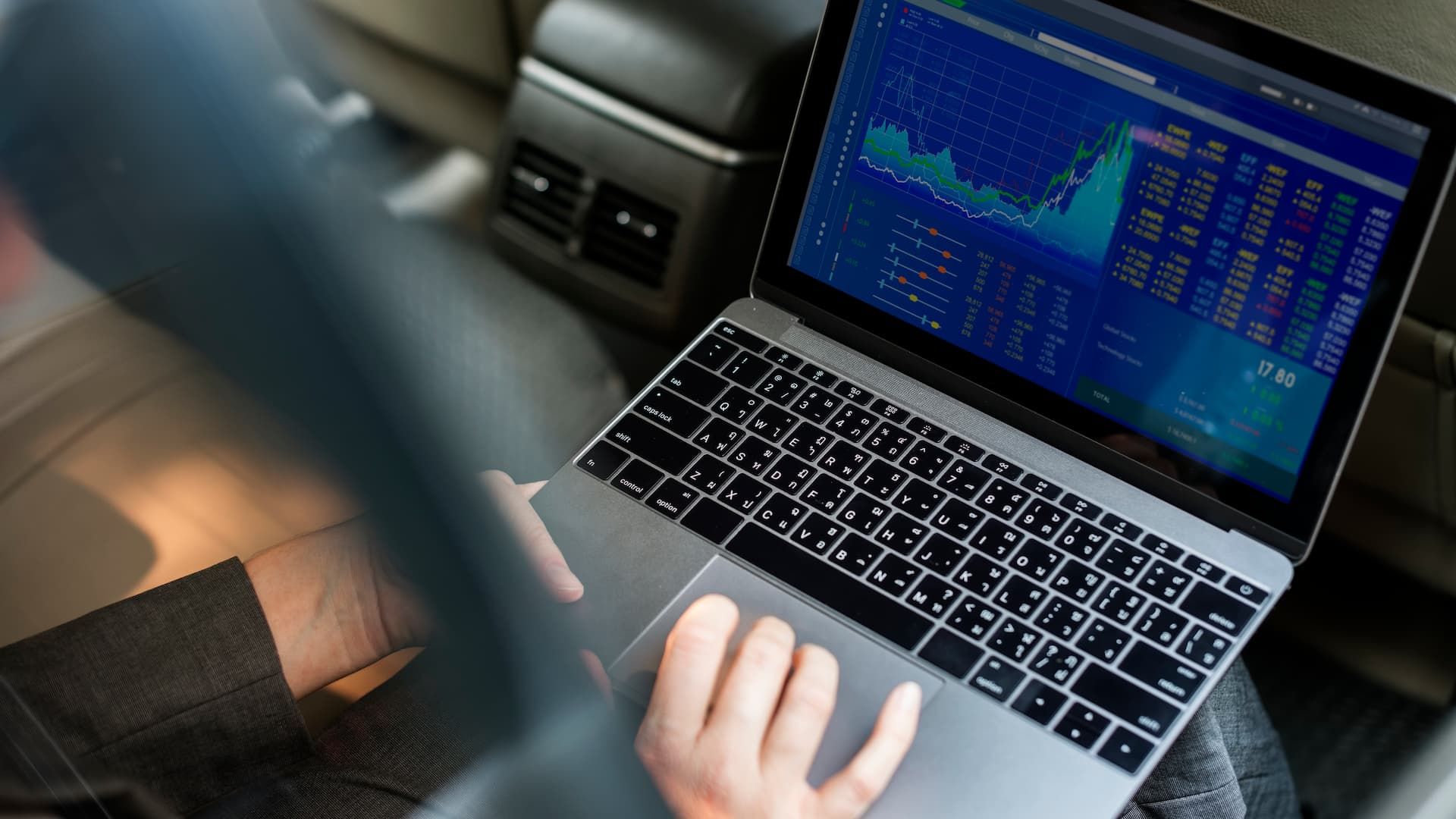Overcoming Trading Biases
Learn how to identify and overcome common trading biases to make better trading decisions and improve your financial outcomes.

Overcoming Trading Biases
Trading biases are cognitive and emotional tendencies that can distort traders' decision-making processes, often leading to irrational behavior and financial losses. Recognizing and overcoming these biases is crucial for achieving long-term success in the financial markets. Whether you're trading in forex, stocks, commodities, or cryptocurrencies, managing your psychological approach to trading is as important as your technical and fundamental analysis skills.
1. Understanding Common Trading Biases
Overconfidence Bias
Overconfidence bias occurs when traders overestimate their knowledge, abilities, or the accuracy of their predictions. This can lead to excessive risk-taking, such as increasing the size of trades or holding positions longer than planned, based on the belief that their analysis is infallible. Overconfidence often results in underestimating the possibility of loss and over-leveraging, which can lead to significant drawdowns.
For instance, a trader might believe that because they've made profitable trades in the past, their future trades will also be successful. This false sense of security can cause them to ignore important risk management strategies like setting stop-loss orders or diversifying their portfolio.
Confirmation Bias
Confirmation bias involves seeking out information that supports one's existing beliefs and disregarding information that contradicts them. In trading, this can manifest as selectively focusing on news articles, technical indicators, or analysis that align with a trader's current position, while ignoring data that might suggest an alternative outcome.
For example, a trader holding a forex position might only pay attention to reports that support the continuation of a trend in their favor, while disregarding reports that indicate a potential reversal. This can lead to missed opportunities or unnecessary losses if the market moves against their position.
Anchoring Bias
Anchoring bias occurs when traders fixate on specific reference points, such as an asset's previous high or low price, and make decisions based on that point, even when new information suggests a different course of action. This can prevent traders from adapting to changing market conditions and lead to suboptimal trading decisions.
For instance, if a trader buys stocks at $100 per share and the price drops to $80, they might anchor to the $100 price, believing the stock will return to that level, even if the fundamentals have deteriorated. This can result in holding onto losing positions for too long.
Loss Aversion
Loss aversion refers to the tendency to prefer avoiding losses over acquiring equivalent gains. This bias can lead to behaviors like holding onto losing trades in the hope that they will eventually turn profitable or exiting profitable trades too early out of fear of losing gains.
For example, a trader might be unwilling to close a losing commodity position, thinking that the market will recover and allow them to break even, which can lead to larger losses if the market continues to move against them.
2. Strategies to Overcome Trading Biases
Develop a Comprehensive Trading Plan
A well-defined trading plan that includes entry and exit points, risk management strategies, and rules for trade sizing is essential in reducing the influence of emotional biases. A solid plan acts as a roadmap, guiding decisions based on logic and analysis rather than emotions.
-
Entry and Exit Points: Establishing clear criteria for entering and exiting trades helps prevent impulsive decisions. For instance, using technical indicators like moving averages or support and resistance levels can provide objective signals for executing trades.
-
Risk Management Strategies: Implementing risk management tools like stop-loss and take-profit orders can help limit losses and lock in profits. These tools enforce discipline by automatically closing trades when they reach predefined levels.
-
Trade Sizing Rules: Defining how much capital to allocate to each trade based on the level of risk can prevent overexposure to a single asset or market. For example, limiting each trade to 1-2% of total capital can help mitigate potential losses.
Conduct Regular Self-Assessment
Periodic self-assessment is crucial for identifying and correcting trading biases. By reviewing past trades, traders can identify patterns of behavior that indicate bias, such as repeatedly holding onto losing positions or making trades based on gut feelings rather than analysis.
-
Trading Journal: Keeping a detailed trading journal is an effective way to track decisions and their outcomes. This allows traders to analyze their behavior, understand the reasons behind each trade, and identify areas for improvement.
-
Performance Analysis: Regularly analyzing trading performance helps identify strengths and weaknesses. For example, if a trader consistently loses money on crypto trades but profits in forex, it may indicate a need to focus more on forex or improve their understanding of crypto markets.
Implement Stop-Loss and Take-Profit Orders
Using stop-loss and take-profit orders is one of the most effective ways to enforce discipline and reduce the impact of biases. These orders allow traders to set predefined exit points, which helps in avoiding emotional decisions during market volatility.
-
Stop-Loss Orders: A stop-loss order automatically sells a security when it reaches a certain price, limiting the loss on a position. For instance, setting a stop-loss at 5% below the purchase price can help prevent larger losses if the market moves against the trade.
-
Take-Profit Orders: A take-profit order automatically sells a security when it reaches a target price, locking in profits. This helps in avoiding the temptation to hold onto a position for too long in hopes of achieving even higher gains, which can be risky if the market reverses.
Seek Diverse Perspectives
To combat confirmation bias, it's important to consider multiple viewpoints before making trading decisions. Engaging with different analyses, consulting with peers, or seeking expert opinions can provide a more balanced perspective and reduce the risk of biased decision-making.
-
Diverse Sources: Reading analyses from various sources, such as forex market reports, stock market news, and commodity price forecasts, can help traders see the bigger picture and avoid getting trapped in a single narrative.
-
Mentorship and Peer Support: Working with a mentor or engaging with a trading community can provide valuable feedback and help traders recognize and address their biases. Mentors can offer insights based on their experience, while peer discussions can introduce new perspectives.
Practice Mindfulness and Emotional Control
Developing mindfulness techniques and emotional control can help traders stay calm and focused, reducing the likelihood of making decisions based on fear, greed, or other emotions.
-
Mindfulness Techniques: Practices like meditation, deep breathing, and visualization can help traders stay centered and focused, even in volatile markets. This can prevent impulsive decisions driven by emotions.
-
Emotional Awareness: Recognizing when emotions like fear or greed are influencing decisions is the first step in overcoming their impact. Traders can use techniques like taking a break or stepping away from the screen to regain emotional balance before making a decision.
3. The Role of Technology in Mitigating Biases
Technology can play a significant role in helping traders overcome biases by automating processes and providing tools that enforce discipline.
Algorithmic Trading
Automated trading systems, also known as algorithmic trading, can help reduce the impact of biases by executing trades based on predefined criteria without the influence of emotions. These systems use algorithms to analyze market data and execute trades at the optimal time, ensuring consistency and discipline.
- Backtesting: Algorithmic systems allow traders to backtest strategies using historical data to see how they would have performed in the past. This can help in refining strategies and eliminating biases that might arise from recent experiences or market conditions.
Risk Management Tools
Platforms like 24Markets offer advanced risk management tools that allow traders to set parameters for trades, such as maximum loss limits, trailing stops, and position size limits, to help manage emotional biases.
-
Position Sizing Calculators: These tools help traders determine the appropriate size of a trade based on their risk tolerance and account size, reducing the likelihood of taking on excessive risk.
-
Volatility Indicators: Tools that measure market volatility, such as the Average True Range (ATR), can help traders adjust their strategies based on current market conditions, reducing the influence of biases like overconfidence or loss aversion.
4. Continuous Learning and Adaptation
Markets are constantly evolving, and traders must adapt to new information and changing conditions to stay ahead. Continuous learning and adaptation are key to overcoming trading biases and improving performance.
Education and Training
Ongoing education is essential for staying informed about the latest strategies for overcoming biases. Traders can benefit from courses, webinars, and books on trading psychology, risk management, and market analysis.
-
Trading Courses: Enrolling in courses that cover topics like trading psychology, technical analysis, and risk management can help traders develop the skills needed to recognize and overcome biases.
-
Webinars and Seminars: Participating in webinars and seminars hosted by experienced traders or market analysts can provide valuable insights and strategies for dealing with biases in real-time market conditions.
Mentorship and Peer Support
Working with a mentor or engaging with a trading community can provide valuable feedback and help traders
recognize and address their biases. Mentors can offer insights based on their experience, while peer discussions can introduce new perspectives.
Adaptation to Market Changes
Traders should regularly review and adjust their strategies to account for new market conditions and data. This flexibility helps prevent anchoring bias and ensures that trading decisions are based on the most current information.
-
Regular Strategy Reviews: Periodically reviewing and adjusting trading strategies based on performance data and changing market conditions can help traders stay adaptable and avoid becoming overly attached to outdated strategies.
-
Market Research: Keeping up with the latest market trends and developments in forex, stocks, commodities, and other asset classes is essential for making informed decisions and avoiding biases.
Conclusion
Overcoming trading biases requires a combination of self-awareness, discipline, and the use of tools and strategies designed to mitigate the impact of emotions and cognitive distortions. By understanding common biases like overconfidence, confirmation, anchoring, and loss aversion, and implementing strategies such as developing a comprehensive trading plan, using technology, and engaging in continuous learning, traders can improve their decision-making process and increase their chances of long-term success in the markets.
Whether you're trading forex, stocks, commodities, or cryptocurrencies, overcoming biases is a critical component of becoming a successful trader.
TAGS
Latest Education Articles
Show more
Earnings Reports and Equity CFDs

Trend vs. Range Strategies

Trading Breakouts vs. Pullbacks

Hedging Basics for Intermediate Traders
Take your trading to the next level.
Join the broker built for global success in just 3 easy steps. A seamless experience built for traders who value speed and simplicity.

Create Your Account

Make Your First deposit
